
There’s nothing more frustrating when buying your first boat than finding out the boat you have just spent your hard-earned cash on is not suitable for what you had in mind. There is a bewildering choice of boats out there so it’s vitally important you do your homework first.
At this stage you will probably have decided on yacht vs. motor boat. If your choice is yacht, then the first thing I would recommend is to join a local boat club and use the knowledge of the members to give you a head start.
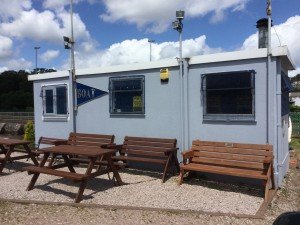
If your penchant is for a motor boat then a lot depends on your budget. For instance, if your budget is fairly tight, then you are unlikely to get a boat with a large modern 4 stroke motor. You are more likely to pick up something with an older 2 stroke motor, and these are notoriously expensive to run, so do bear this in mind. Ask any owner of a largish 2 stroke motor and they will confirm the costs involved.
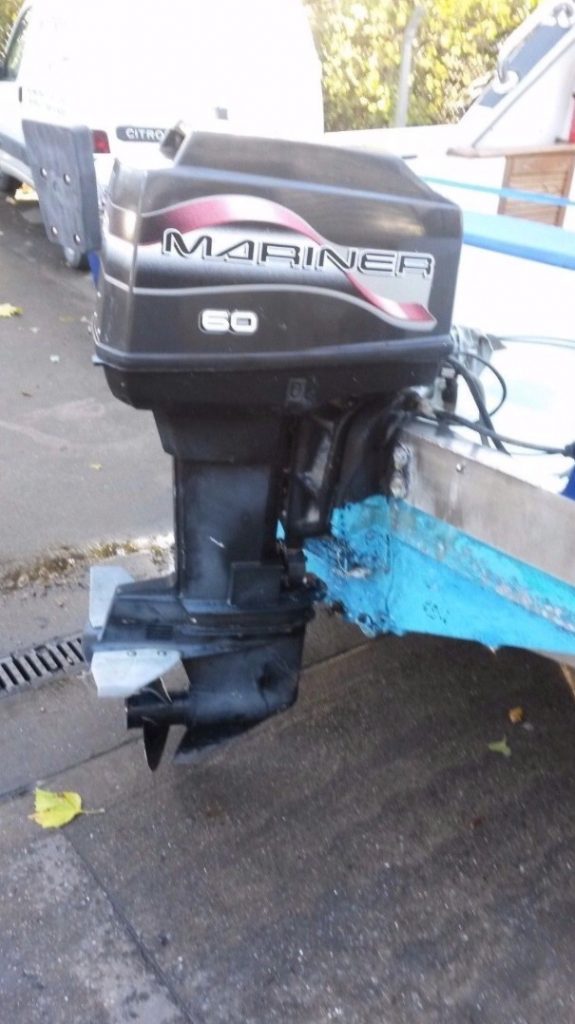

If you’re happy with a smaller 4 stroke, say 20 – 40hp then you may find a boat that suits.
If your budget is more substantial then you may find a diesel-powered boat suits you better. These range from small chugalong styles (around the 6 knot mark) to very powerful boats that will fly along at 40 knots!
So, as you can see, there is a boat for any situation. Don’t be afraid to pop along to our club, or your own local club, and fire away with questions as most boaters will be more than happy to share their knowledge with you.
Once you’ve decided on style and size of boat the next question is:- where are you going to keep it? Will it be stored on a trailer at home, and have to be launched & retrieved every time you want to use it, or keep it on a permanent mooring?
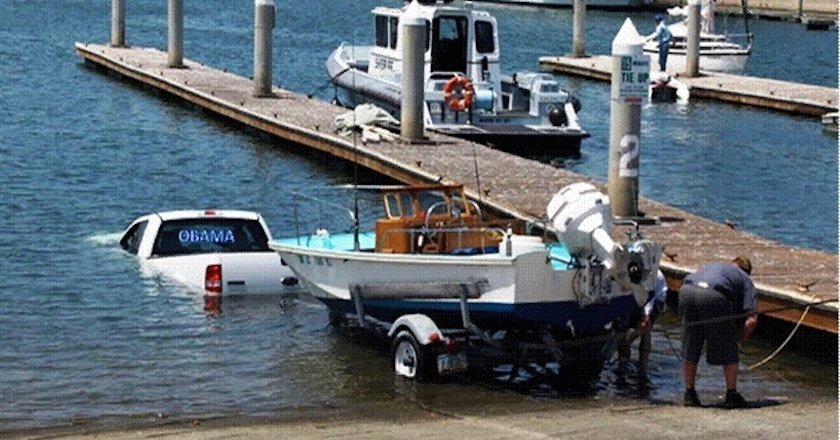
Types of mooring
If you have your boat moored in a Marina such as Torquay for instance, then it’s not such a big issue as you usually don’t have tides and currents to contend with. You walk along a pontoon and step directly onto your boat as easily as getting into a car. However, you will pay a premium for this luxury!
Having your boat on a swinging mooring, or fore & aft trots as found on the river Teign means you need to give your choice of boat a little more thought.
A swinging mooring is where your boat is attached to a single buoy and ‘swings’ around it as the tide changes.
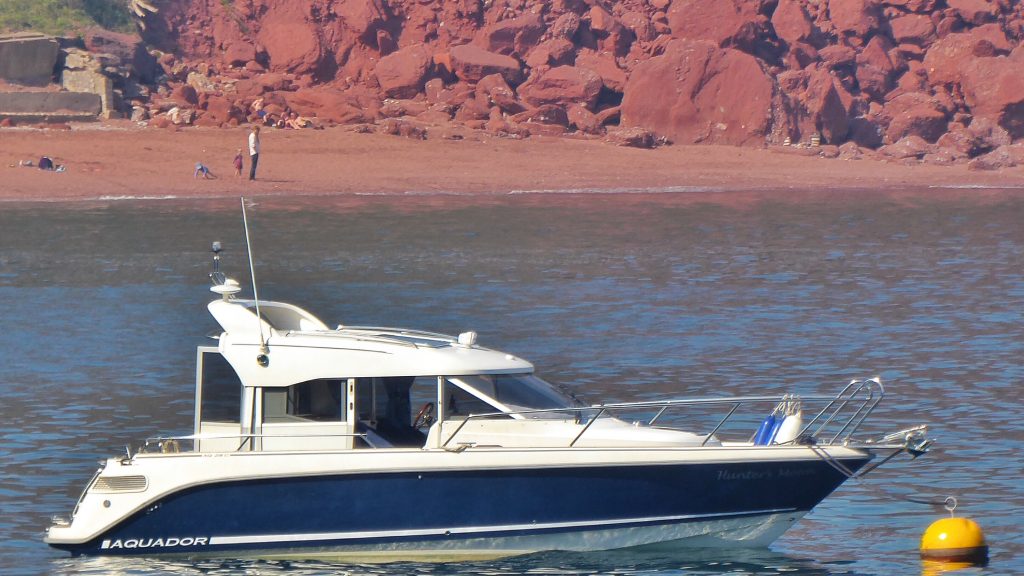
A ‘trot’ mooring is where a number of boats are attached (fore & aft) to a single piece of rope or chain.
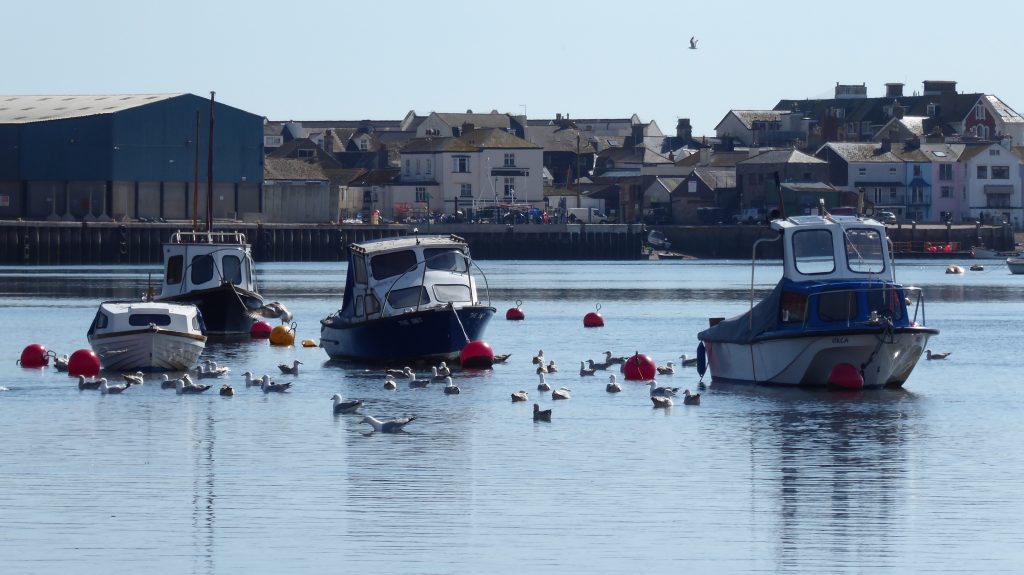
With a tide that may be running at 5 or 6 knots you will need to think about how you get to your boat if it is moored in the middle of the river, or even further up the river, e.g. at Ringmore. Some guys are lucky as their boats are moored quite close to the beach alongside the clubhouse, which means they can use a much simpler/smaller dinghy to reach their main boat, or even wade out to their boat in some instances.
So, before you start thinking about dinghies you need to decide what your main boat is going to be and the likely mooring location allocated to you by the Harbour Office. Try and get an idea of where you would like to have your boat moored, and the Harbour Office chaos will usually do their best to accommodate you.
Yachts, small fishing type boats or larger motor boats are all suitable for use on the Teign and offshore, limited only by the weather for the smallest craft.
Wind conditions
Westerlies, (wind from the west) usually mean the river is a bit roughed up, but the sea can be relatively smooth whereas Eastlerlies, (wind from the east) often conversely mean the sea is too rough for pleasant sailing/fishing etc. but the river can be benign and a delight to travel up.
Even if you run aground up the river, as long as the tide is on the way in, you will soon get afloat again with no harm done.
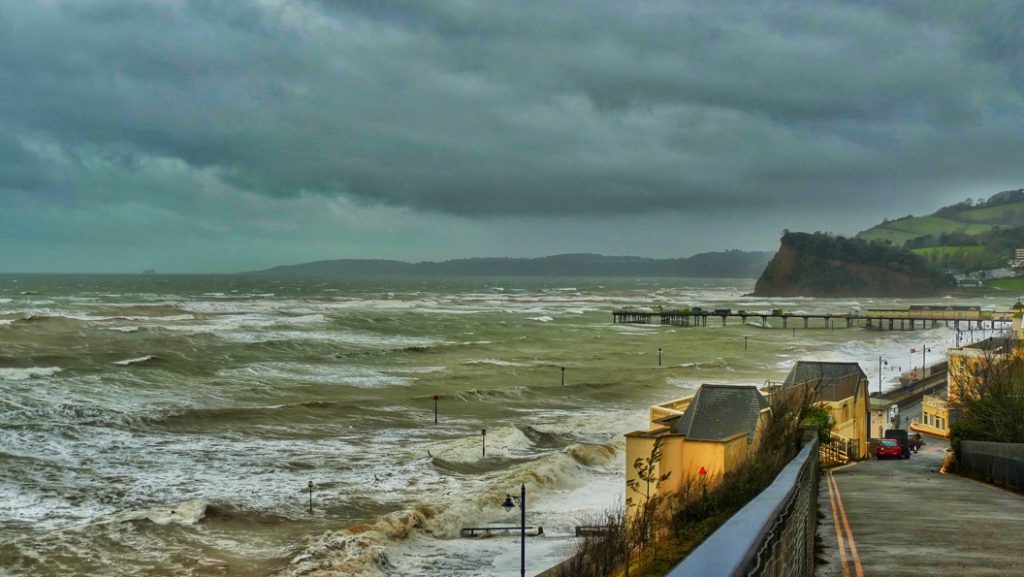
So, let’s say you have your boat moored up river at Ringmore (the north side of Shaldon bridge). The forecast is for westerleys, meaning the sea state may well be favourable however, getting to your boat means you may need to navigate a choppy river and, speaking from experience, you do not want to be trying to get to your boat in a small inflatable, or an 8’ ‘pram’ dinghy loaded with all your gear, fuel etc., and maybe a passenger or two when the river is blowing rough with 2 or 3 foot waves!
I’m on my 3rd dinghy, as the first two purchased were just not up to the task of safely delivering me up to my main boat at Ringmore. I now have an 11’6” double-skinned, well built boat that I can safely stand up in even in a rough windswept river and an easier-to-manage inflatable for when conditions are fair.
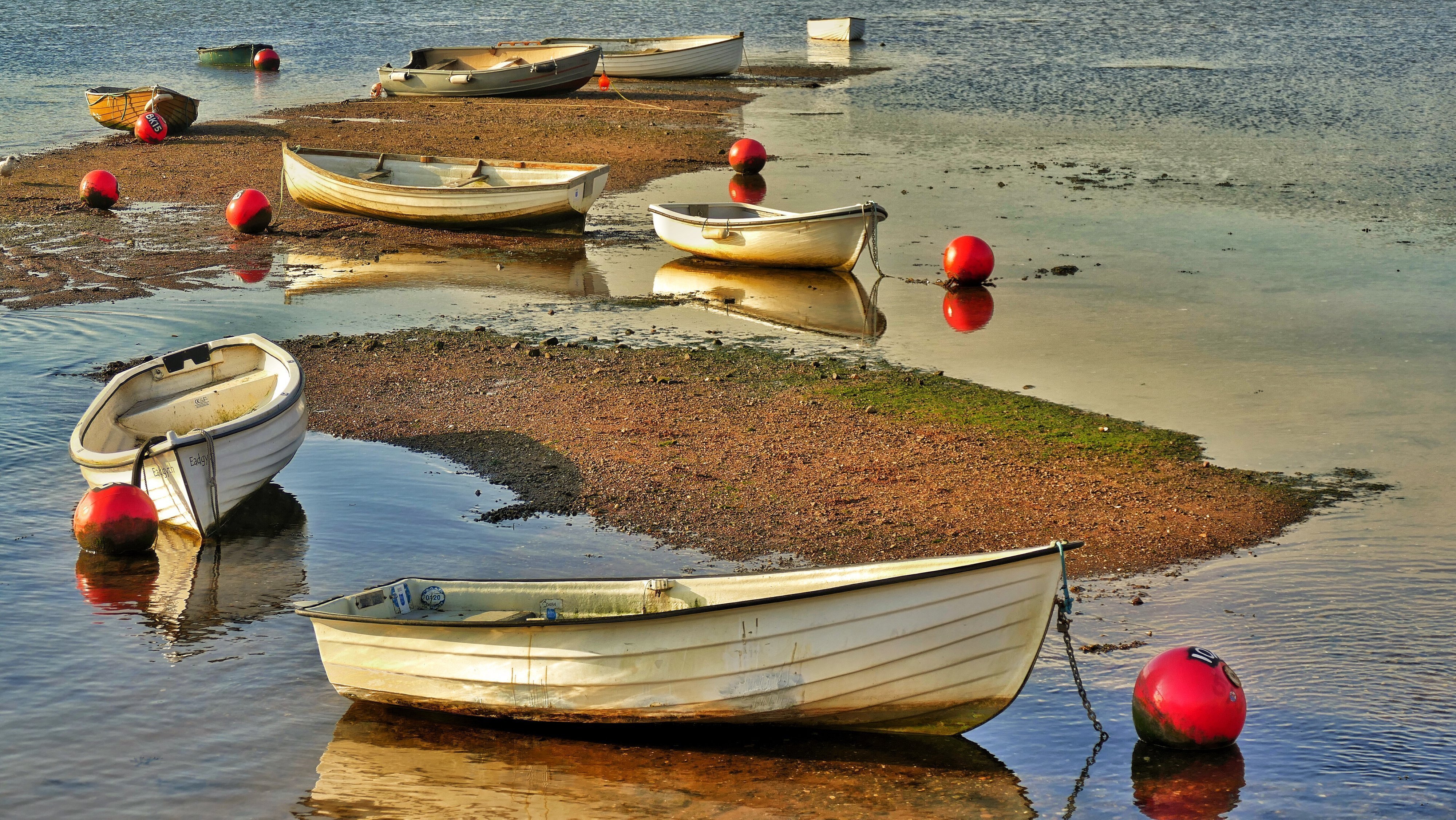
Remember, even if you are a totally fair weather boater, conditions can change and worsen before you return. The sea has a surprising habit of suddenly changing to rougher conditions just when you are some miles from home so always keep an eye out on wind strength and direction for the day.
Try before you buy!
I would also suggest whoever you buy the boat from gives you a proper sea trial and not just buy something that looks good sat on a trailer. A lot of fingers have been burnt this way. It’s a buyer’s market so do make sure you are not paying over the odds and remember, boats are expensive to run, especially older large 2 stroke engines.
If you are buying a second hand Ford Fiesta 2008 model it’s pretty easy to see what the going rate is, as there are lots around for sale, Autotrader etc. however, if you see a boat for sale don’t just assume that the price being asked for it is the going rate. Make sure you do your homework as the seller may have put a really cheeky price on it.
Also, if you are shelling out a lot of money, then it is advisable to get a marine surveyor to check over the boat and give you a report. Not cheap, but could save you buying a lemon.
A general rule of thumb with smaller motor boats is that most of the value is in the engine so do make sure you have confidence in what you are buying. If necessary, take along a seasoned boater or mechanic for a qualified opinion.
Don’t forget, you will also need lifejackets before venturing out plus all the other boating paraphernalia we all use such as mooring ropes/shackles/fenders/oars for dinghy/radio/wet weather gear etc. etc.
If you’re lucky, the boat you buy may even come with all the necessary equipment including a trailer, so make sure you shop around for the best deal.
Also, you need to factor in the cost of getting your boat ashore at the end of the season for anti-fouling (see below), maintenance etc. If your boat is too big to retrieve on a trailer, then you will need to pay for a crane lift-out and storage at one of our local friendly boatyards.
Anti-Fouling
If you’re new to boating then you may not know what we mean by anti-fouling.
Basically, any craft sitting in salt water will accumulate growth under the waterline. This will range from a slimy green weed to molluscs such as mussels etc. If left over time, the aforementioned growth will get worse and begin to slow down the speed of your boat and hence cost you more in fuel. This fact is particularly important to yachtsmen who typically need to extract every ounce of speed from their hulls.
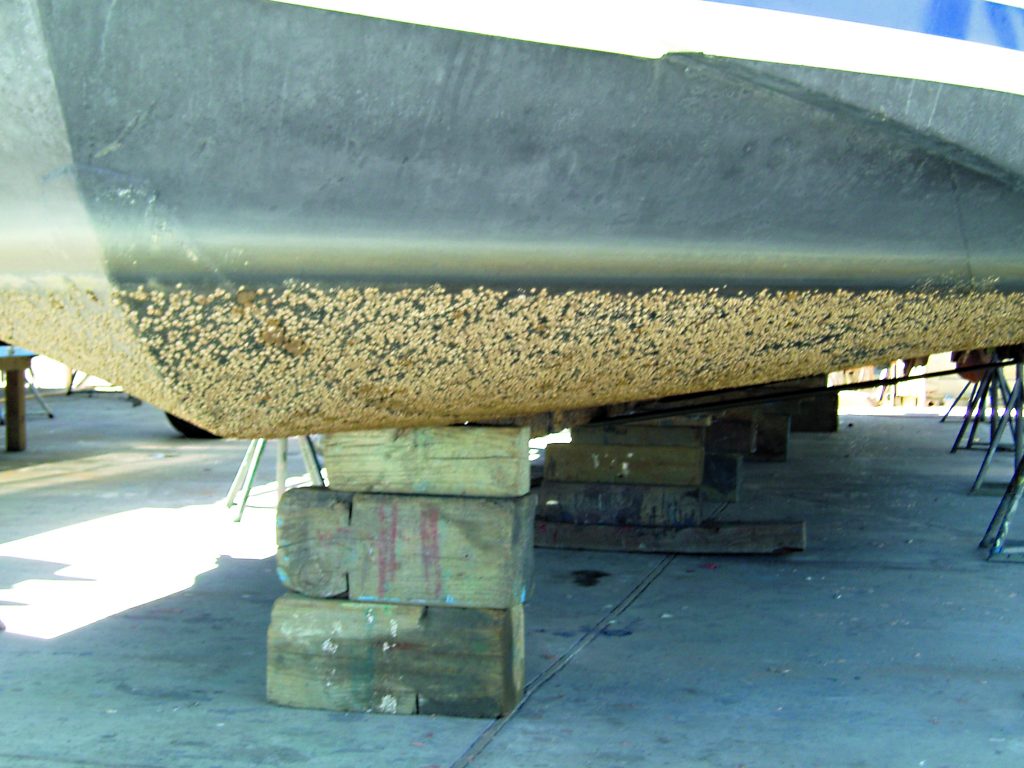
To combat this problem we use a special ‘sacrificial’ paint on our hulls. This gradually peels away taking much of the growth with it. There are paints available for slower moving craft such as yachts, and also for very powerful high speed motor boats.
The process is usually as follows:
The boat is brought ashore and the undersides are thoroughly cleaned with a pressure washer. A paint scraper is then used to remove the more stubborn growth. Once dried, the hull is a given a couple of thick coats of anti-foul paint, sometimes preceded with a primer.
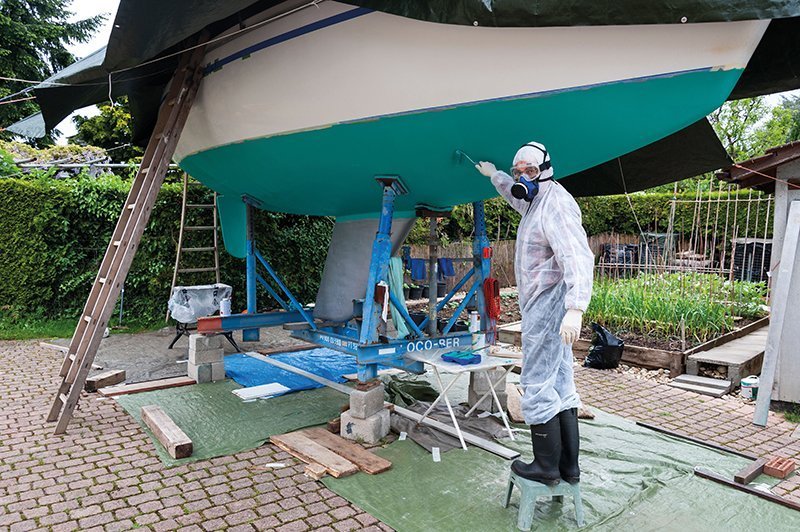
It all sounds very expensive?
It doesn’t need to be. You don’t need 2 boats to enjoy the river. You can simply buy a decent dinghy around the 11 or 12 foot mark for a few hundred quid, plus a suitable small 3 to 5hp outboard, (approx. £200/400). Speak to the Harbour Office about a trot mooring on the beach (approx. £50/60 per annum) and you can then enjoy the whole of the river all the way up to Tescos at Newton Abbot.
On calm days when the sea state is flat, you will even be able to safely venture out for short trips along the coast. Which brings us to . . .
Safety
One thing that is definitely worth taking seriously is your, and your passengers safety at sea and on the river.
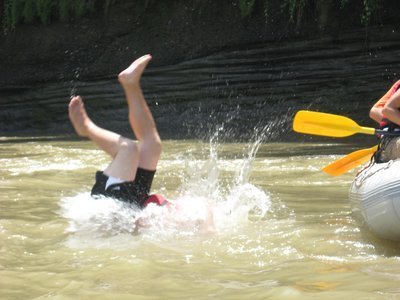
Most ‘accidents’ occur on the way to your main boat, so always consider wearing a lifejacket even if just crossing the river by a few yards.
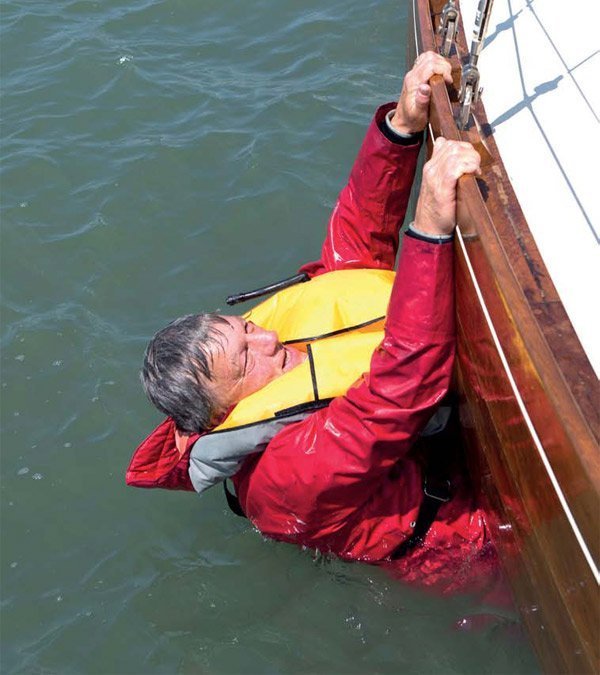
Tuition
Seasports South West based on Back Beach in Teignmouth run RYA accredited courses to give you the knowledge required before venturing out to sea. I would recommend, at a minimum, doing the RYA Powerboat Level 2 course, and the RYA VHF Radio course (1 day).
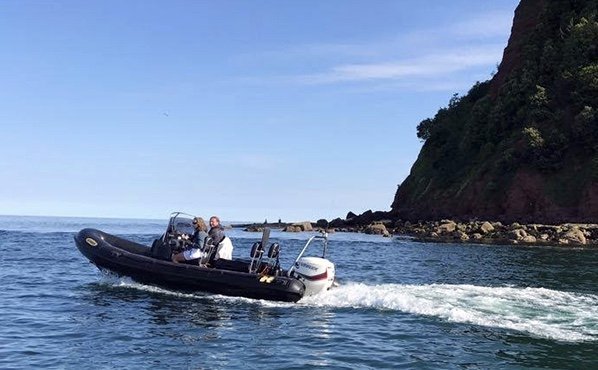
On completing these courses you will have the confidence to manoeuvre your new boat in tight spots, learn how to complete a man overboard drill, handle a high speed boat out at sea and also be able to operate your radio in the correct fashion and call for assistance should you need it.
Finally, if you’re new to boating and considering buying your first boat to use on the river Teign or at sea, do call in to see us as we will do our best to save you making unnecessary expensive choices.
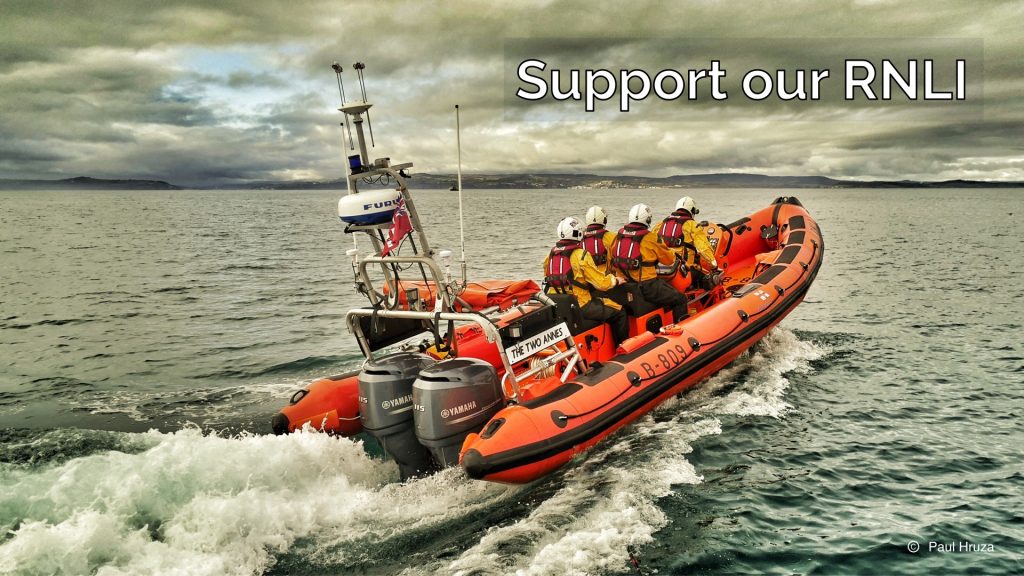
Feel free to drop us a line at our Contact Us Page to arrange a meeting.
Now you’ve got your new boat you may want to read this: New to boating? Where to go in your new boat plus some boating tips!
How do I secure my boat to a mooring/pontoon etc.? Learn a few basic knots here: Boating Knots
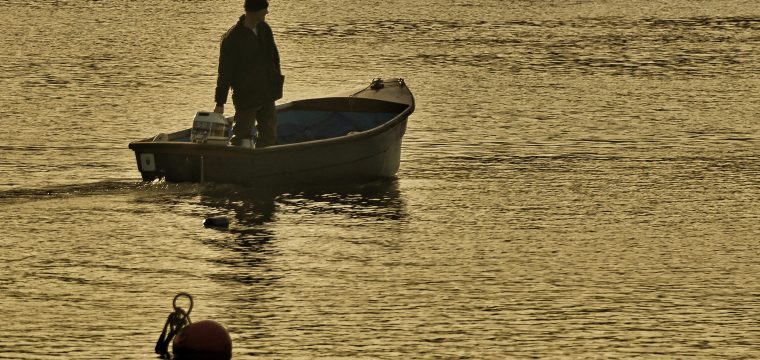
Some excellent information.
Many thanks.